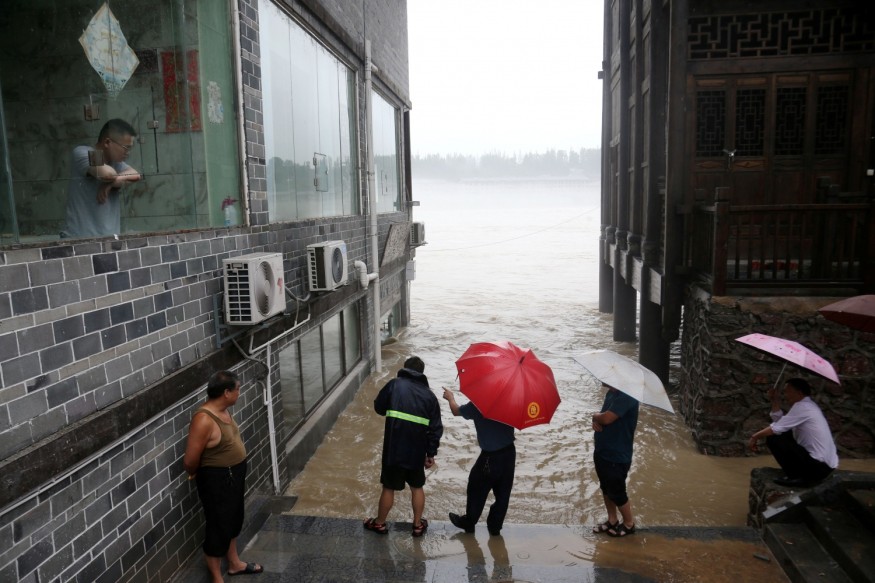
A month of heavy rainfall has brought devastating havoc across 26 provinces, affecting 19 million residents. As of July 3, 106 people are confirmed dead or missing.
Chongqing, the latest area to be hit by severe flooding in the country, experienced heavy rains since July 1. According to the Chinese state-run People's Daily, 28 of its 38 counties were flooded on July 2 as the rainfall reached 128 mm (5 inches) that day.
Two rivers are traversing Chongqing: the Yangtze River and the Jailing River. In 1981 when both rivers swelled at 193 meters, 15 million people were hit by the flood, and 1.5 million lost their homes.
A mudslide that buried a highway in Chongqing on July 1 was caught on a surveillance camera. The highway is now closed. The operator said that the mudslide on the roads was so severe that both directions were affected and had to be closed. Last month, at least 40,000 residents had to be evacuated due to flooding in a section in Qijang River, upstream of the Yangtze River. City authorities claim it was the worst flood since 1940.
An official from the Shanhuwan neighborhood in Chongqing said that with the month-long intense rain, it is expected that the first floor and second-floor buildings will submerge at 190 meters, so the third and fourth floors need to be careful.
"The residents who live on the fourth floor and lower should start preparing for evacuation, so once flooding starts, they can quickly escape," they added.
In the Yichang City, the waist-high murky waters turned the streets into canals, leaving peoples and cars stranded. Last month, car windows had to be smashed by responders to rescue people trapped by floodwaters.
Yangshou, a famous tourist town, had a burst of heavy rain that authorities called a once-in-two-centuries event. The torrential rain damaged 1,000 hotels and guesthouses and 5,000 shops trapping visitors in their accommodations. Qin Hui, a retired history professor, posted on his online essay that they were trapped for two nights until a volunteer team rescued them.
Hubei, where Coronavirus epicenter Wuhan is the capital, also became one of the hardest hit by the flooding. Wuhan made the headlines early this year as it was where the first emergence of coronavirus was reported. Hubei had the highest number of COVID-19 cases reported than any other parts of China.
The torrential rains have caused concerns among experts due to potential landslides and the collapse of reservoirs and dams. According to Brandon Meng, a hydraulic engineer in the Southern City of Shenzhen, most of the small reservoirs in China were constructed in the 1960s and 1970s. They were not compliant with high construction standards that it poses dangers in the event of extreme weather.
Heavy rains leading to swelling of China's rivers are common at this time of the year. However, according to People's Daily, the official Communist Party newspaper admitted that for this year, activities to address the coronavirus pandemic limited the flood preparations. Dealing with this year's flooding, which is hounded by an epidemic and extreme rain, made it a "very formidable task".
© 2025 NatureWorldNews.com All rights reserved. Do not reproduce without permission.





